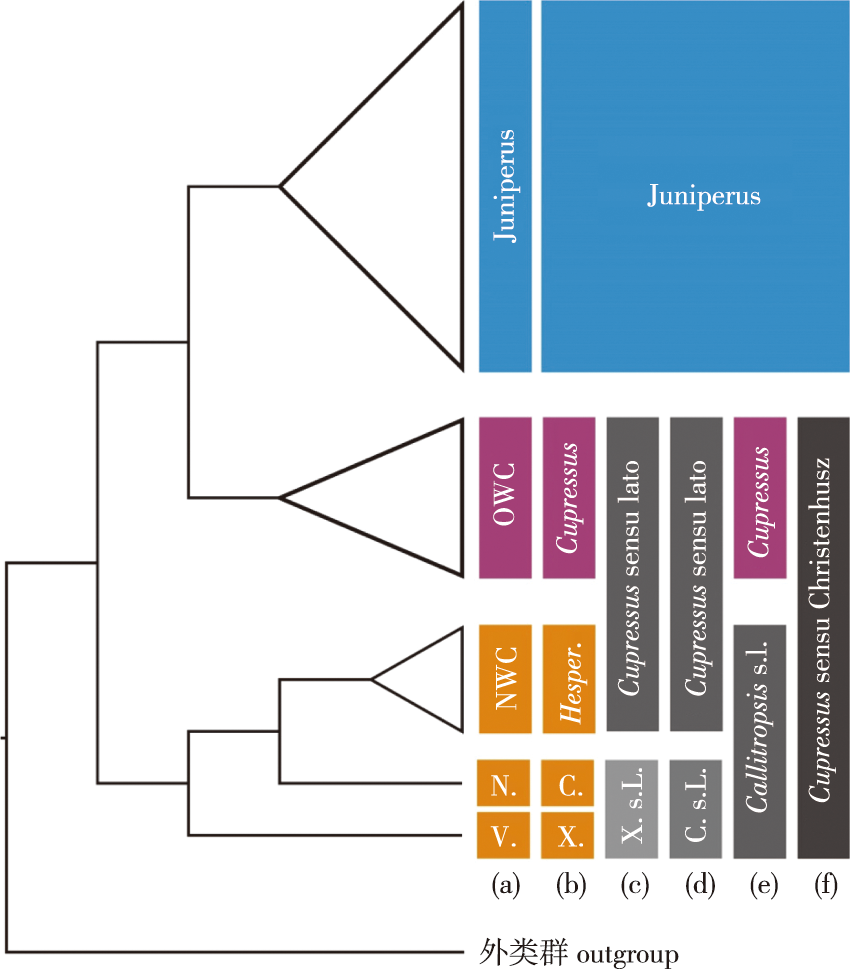Cupressus L., the type of Cupressaceae family, is typified by Cupressus sempervirens L. Over the years, as many other species have been discovered and described, and with advances in phylogenetics and population genetics, the taxonomy and species diversity within the genus Cupressus have been subjects of continuous debate. Traditionally, the Cupressus sensu lato includes species from true Cypresses sensu stricto and New World cypresses (Hesperocyparis Bartel & R.A.Price), while the Cupressus s. s. comprises all Old World species except the Vietnamese golden cypress (Xanthocyparis vietnamensis Farjon & T.H.Nguyên) found in Vietnam. Christenhusz et al. defined the broadest interpretation of Cupressus (Cupressus sensu Christenhusz) which encompasses four groups: true cypresses (Cupressus s.s.), Vietnamese golden cypress, Nootka cypress (Callitropsis nootkatensis (D.Don) Oerst), and New World cypresses. These ideas have been challenged by recent phylogenomic studies. Recent studies have shown that Cupressus s.l. is non-monophyletic, Cupressus s.s. is monophyletic and forms a sister group with the genus Juniperus. The common ancestor of these two is a sister group of the common ancestors of the Xanthocyparis, Callitropsis and Hesperocyparis. Based on current research, the true cypresses should encompass 14 species, including one hybrid. This paper offers new perspectives on previous contentious taxonomic treatments, for instance, reclassifying Cupressus rushforthii Maerki & J.Hoch as a synonym of Cupressus austrotibetica Silba, and confirming that Cupressus × jiangeensis N. Zhao is a hybrid offspring of the Cupressus fallax Franco and Cupressus funebris Endlicher. Additionally, Cupressus ×wangii J.Hoch, Maerki & Rushforth has been reduced to a synonym of Cupressus × jiangeensis. To avoid confusion, it is recommended to rename the recently discovered tallest tree species in Bomi County, Cupressus austrotibetica, to “西藏高柏” (Xizang tall cypress) in Chinese, and the cypress predominantly found in Nepal, Cupressus torulosa D.Don ex Lamb., is referred to as “喜马拉雅柏” (Himalayan cypress) in Chinese, instead of “西藏柏木” (Xizang Cypress). To ensure accuracy and scientific validity in future studies on species delineation within the genus, we recommend integrating multidimensional data from morphology, genetics, ecology and biogeography. This approach will help the reducing of classification confusion and support biodiversity conservation efforts more effectively.
 PDF(2256 KB)
PDF(2256 KB)


 PDF(2256 KB)
PDF(2256 KB)
 PDF(2256 KB)
PDF(2256 KB)
